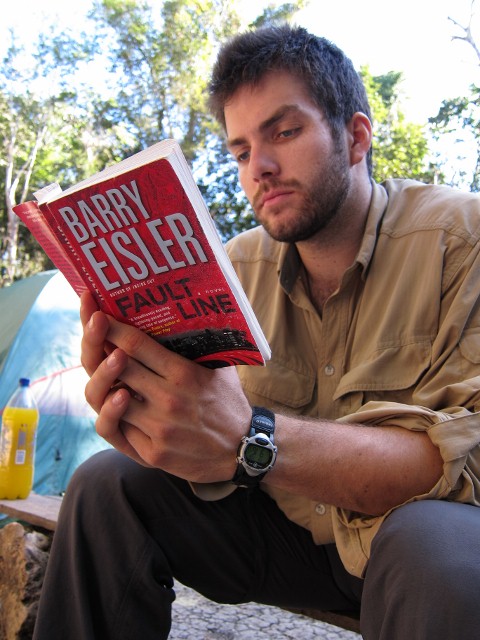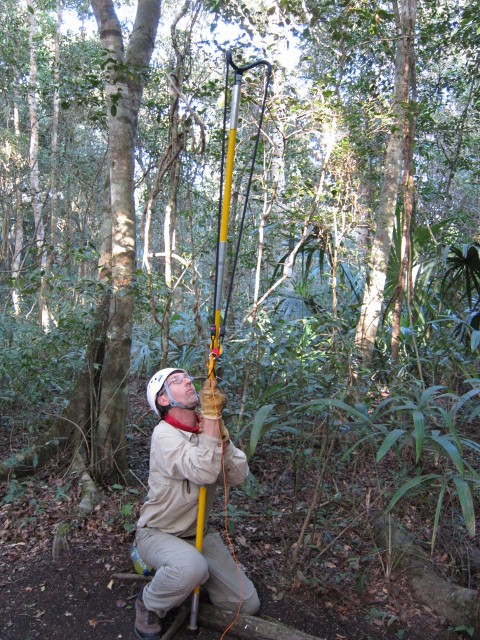This morning we caught up on our cheap reads. Vince blasted through “Fault Line”,

and Jim admired his jungle hero.

We rode and hiked a few short hours to our last ruins site, La Florida. There weren’t many ruins, but we did find one giant-ass ceiba tree.

The ceiba is the national tree of Guatemala (which apparently means “land of the trees” as well). When it’s young, the ceiba is covered with nasty spikes on the trunk and tops of the branches, which made virtually all the ceibas we found unsuitable for tree climbing. This old man, on the other hand, had zero spikes. Like a fine wine, the ceiba gets better with age. Julie represented.

One of my favorite pics from the trip: our equipo with guide assistant Juan Carlos.

This was a tough tree to scale: our anchor saddles were roughly 80 feet up. Everyone gave the Big Shot a few tries until we finally got a successful shot. Jim demonstrated proper Big Shot form.

We snapped a few epic tree-top photos, but I’ll upload those later because they’re on other cameras. After the incident with the leaf bug, I didn’t feel like subjecting my camera to an 80-foot “whoops”. Two green parrots squawked at us on their sunset fly-by.

The other big highlight of the day happened back at the campground. We ran into another North American, a middle school science teacher from Davis, CA, named Mike Reed. Mike was the quintessential nutty professor. He had apparently visited the Mayan ruins in El Petén twice a year for the last six years, found multiple artifacts and undiscovered ruins, and participated in some sort of academic feud with Richard Hansen, the professor who originated the Mayan Petén research thirty years ago. Mike traveled with an assistant named “Hiro” who looked and spoke like Mr. Miyagi from the Karate Kid and force-fed canned peaches to Mike in an effort to get him moving (they were only stopping at our site for a brief respite). Walfre and Mike had worked together before, and Mike said that we were very lucky to have him as a guide. Mike also showed us pictures from his travels in the rainy season, when he would literally be swimming the same bajos (low areas of the jungle) that we had been hiking. He didn’t take anti-malarials in the dry season (now), which gave me relief (since I’m not either), but his story about almost stepping on a six-foot-long Barbara Armarilla (the most deadly snake in Guatemala) gave me pause.